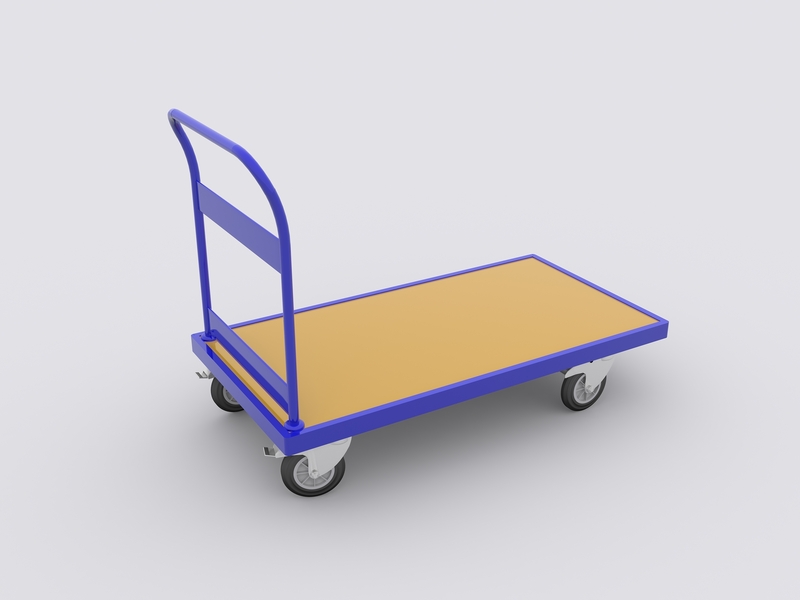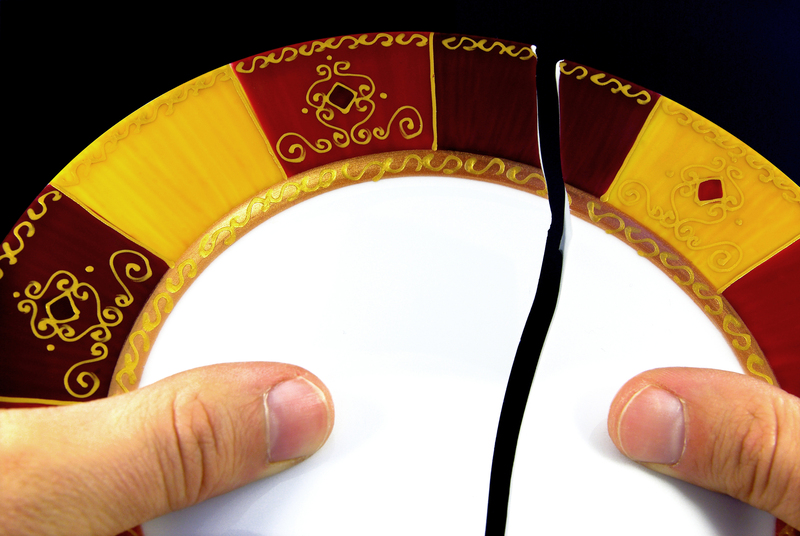The Delicate Dance of Piano Moving and the Benefits of a Pro
Posted on 31/05/2025
The Delicate Dance of Piano Moving and the Benefits of a Professional
Pianos are much more than just musical instruments; they're family heirlooms, investments, and sometimes a centerpiece of a home. But when it comes time to relocate these intricate masterpieces, piano moving becomes a delicate dance requiring skill, precision, and specialized knowledge. Whether you're moving across town or to another state, understanding the complexities of piano transportation and the advantages of professional piano movers can make all the difference. In this guide, we'll explore the art of piano moving, uncover the potential risks, and highlight the many benefits of hiring a professional piano mover.

Understanding the Complexity of Piano Moving
The Heft and Fragility of Pianos
A piano is both heavy and fragile--making it a uniquely challenging item to move. Some models can weigh as much as 1,400 pounds and contain thousands of moving parts. These musical instruments aren't simply large pieces of furniture; their internal mechanics and delicate veneers require special care to avoid damage.
- Grand pianos can range between 500 and 1,400 pounds.
- Upright pianos commonly weigh between 300 to 800 pounds.
- Pianos have sensitive components like strings, hammers, pedals, and soundboards that can be easily disrupted.
Attempting to move a piano without proper knowledge and equipment can lead to costly mistakes. It's not just about muscle--it's about understanding the balance, weight distribution, and proper handling techniques.
Common Piano Moving Challenges
- Size and Weight: Pianos are awkwardly shaped and extremely heavy; moving them upstairs, through narrow hallways or tight door frames is a significant challenge.
- Delicate Mechanical Parts: Rough handling or improper securing during transport can disrupt the intricate internal mechanisms.
- Risk of Injury: Because of their weight and bulk, pianos pose a risk of back injuries or other physical harm to inexperienced movers.
- Damage to Property: Scratched floors, chipped walls, and damaged stairways are all common results of amateur piano moving attempts.
Given these obstacles, the delicate art of piano moving demands expertise beyond standard moving tasks. This is where a professional piano mover comes into play.
Why Hire a Professional Piano Moving Service?
There is a world of difference between regular movers and those who specialize in piano moving. Here's why entrusting your precious instrument to experienced professionals makes sense:
The Invaluable Benefits of a Pro
- Specialized Equipment: Expert piano movers use customized dollies, padding, skids, straps, ramps, and moving boards to safely transport your piano.
- Trained Personnel: Professional teams have received training on handling various types of pianos, employing techniques to ensure balance and minimize risk.
- Protection for the Instrument: Movers adequately pad and secure the piano, safeguarding it from vibrations, jolts, and humidity changes during transit.
- Safety First: A professional piano moving company is insured, so any accidental damage is covered, and risks of injury are minimized for you and your family.
- Efficient Service: With experience comes efficiency--professionals can often complete a move in a fraction of the time it would take amateurs, reducing disruptions to your schedule.
By choosing a reputable piano moving service, you ensure a smooth and safe transition for your prized instrument.
The Step-by-Step Process of Professional Piano Moving
Here's a look at how the delicate dance of piano moving is performed by experts:
1. Pre-Move Assessment
Professional piano movers begin with a thorough assessment of your instrument and its environment. Key factors include:
- Type, size, and weight of the piano
- Exit and entry points, including stairs, doorways, and tight spaces
- Any necessary disassembly (removal of legs, pedals, or lids)
- Identification of obstacles and planning the safest, most direct route
2. Securing and Preparing the Piano
Before the move, the piano is carefully padded and wrapped to prevent cosmetic and internal damage. Components that could shift or break are either fastened or removed. This meticulous prep work is a hallmark of a professional piano mover.
3. The Move Itself
- The team uses special equipment--such as piano boards and strap systems--to maintain control throughout the move.
- Each step is carefully choreographed; communication is clear and constant among team members.
- Adjustments are made in real time to account for unexpected obstacles or tight angles.
4. Secure Transportation
Once loaded, the piano is secured within the moving truck to prevent shifting. The climate-controlled environment helps prevent warping or cracking due to humidity changes.
5. Safe Unloading and Placement
Upon arrival, the instrument is delicately unloaded and moved to its new location. Final assembly and placement ensure that the piano is level, stable, and ready for use.
Pitfalls of DIY Piano Moving: Risks and Realities
While it may be tempting to save a little money by attempting a DIY move, the potential risks far outweigh the savings.
- Physical Strain & Injury: Pianos are not only heavy but unbalanced. A single misstep can lead to severe injuries.
- Costly Repairs: Even minor bumps can cause major internal or cosmetic damage, requiring expensive repairs.
- Insurance Gaps: Damage occurring during a DIY move is not likely to be covered by standard homeowner's policies.
- Lack of Tools: Without professional-grade equipment, controlling the piano's movement becomes nearly impossible.
The sad reality is that the savings from a DIY move can be quickly wiped out by repair bills or injury-related expenses. In contrast, the peace of mind and security offered by a professional piano mover is truly invaluable.
The Value of Specialized Piano Moving Insurance
Even with all precautions in place, accidents can happen. This is why many professional piano movers offer insurance as part of their services. Insurance ensures that, should any damage occur, you're covered financially for repairs or replacement. This layer of security is yet another advantage professionals bring to the table.
Tips for Choosing the Right Piano Moving Specialist
Selecting the right company for your piano move requires careful research. Here are some tips to ensure you hire top-tier piano movers:
- Check Experience: Choose a company with a solid track record in specialized piano transportation.
- Read Reviews: Look for genuine customer testimonials and high ratings on trusted review sites.
- Verify Insurance and Licensing: Only work with movers who are fully insured and licensed.
- Ask About Equipment: Ensure they use dedicated piano moving tools and vehicles.
- Discuss the Process: A reputable company will walk you through their step-by-step plan for moving your piano.
By following these guidelines, you maximize the benefit of working with a specialized piano mover and can rest easy knowing your treasured instrument is in safe hands.
Cost Factors in Piano Moving
The investment you make in professional piano moving reflects not only the size and type of your instrument, but also logistical factors such as:
- Distance to be traveled
- Number of stairs or steps
- Complexity of the move (tight spaces, obstacles)
- Need for disassembly and reassembly
- Special storage requirements
While the cost varies, most homeowners find the price reasonable when weighed against the value of protecting a piano from damage--or avoiding costly repairs altogether.
What to Do Before, During, and After Your Piano Is Moved
Before the Move:
- Measure both your piano and all doorways, stairwells, and hallways it must pass through
- Clear the moving path of obstacles, rugs, and tripping hazards
- Communicate any special concerns to the moving team ahead of time
During the Move:
- Follow the instructions of the moving team, keeping kids and pets safely out of the way
- Observe the handling of your instrument for peace of mind
After the Move:
- Let your piano acclimate to its new environment for a few days, especially if the humidity level has changed
- Schedule a professional piano tuning--moving can disturb the tonal balance
- Inspect the instrument for any signs of damage and notify your mover immediately if you notice anything amiss

Frequently Asked Questions About Piano Moving
Can my regular moving company move my piano?
While some general movers may offer piano moving as an add-on, they may lack the experience, tools, and insurance specific to pianos. For complex or valuable instruments, specialized movers are strongly recommended.
Is piano moving worth the cost?
Absolutely. Compared to the risk of injury, costly repairs, or permanent damage, the investment in expert piano moving services is a sound decision for piano owners.
Do all pianos need to be disassembled to be moved?
Not always. Upright pianos can often be moved as one piece, while grand pianos typically require removal of legs, pedals, and lid. Your moving professional will determine the best approach.
Preserving the Heart of Your Home with Professional Piano Moving
At the end of the day, your piano is more than wood, metal, and ivory--it is a vessel of music, memory, and joy. Ensuring its safe passage during a move is a responsibility best entrusted to those who understand both its value and its vulnerability.
The delicate dance of piano moving is one of precision, preparation, and care--qualities that define the work of experienced piano moving professionals. By prioritizing expertise and entrusting your piano to the hands of specialists, you guarantee its preservation for generations to come.
When it comes to safeguarding your treasured instrument, remember: the benefits of a professional piano mover far surpass any DIY efforts. Make the right move--choose the pros, and keep the music alive in your home.



